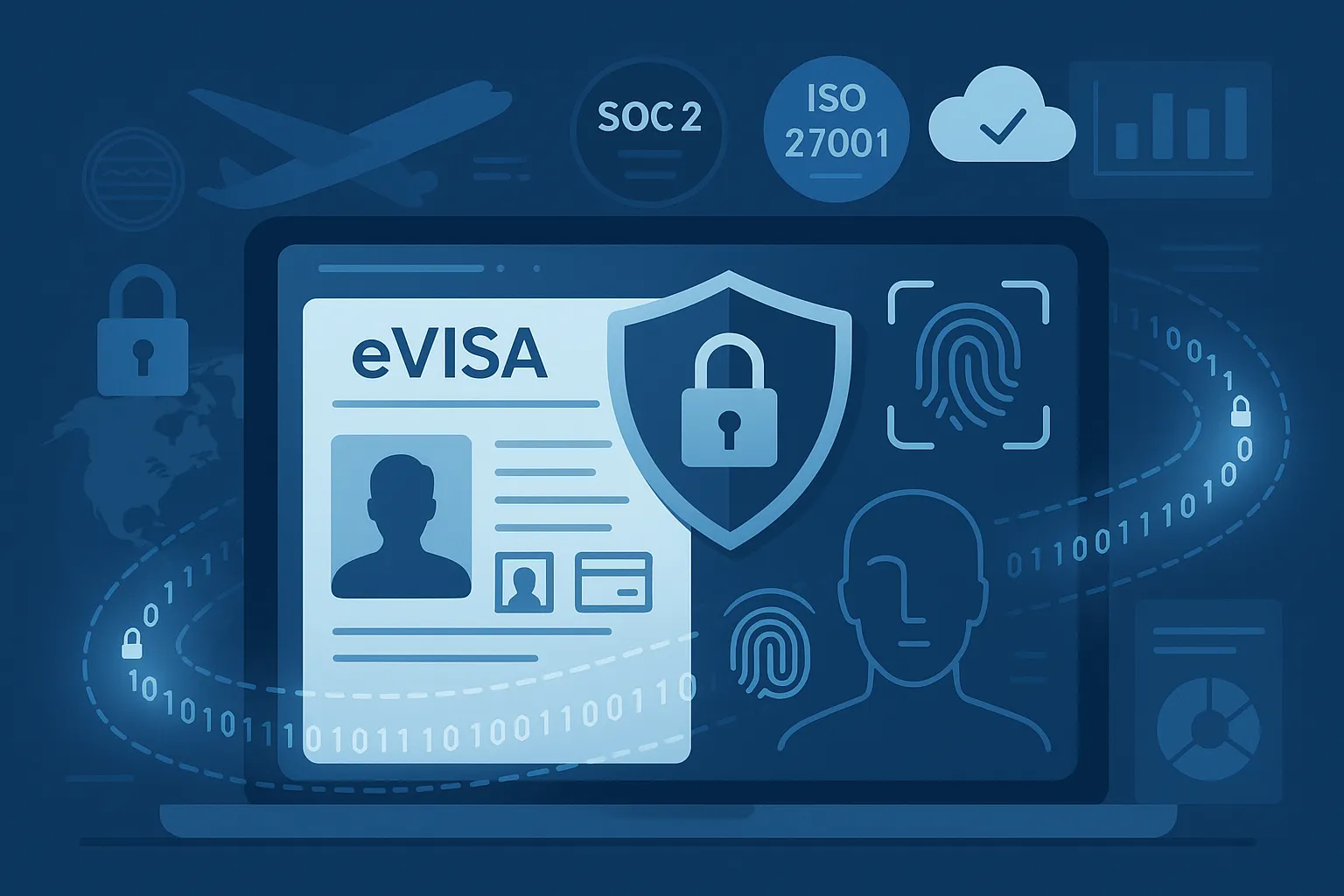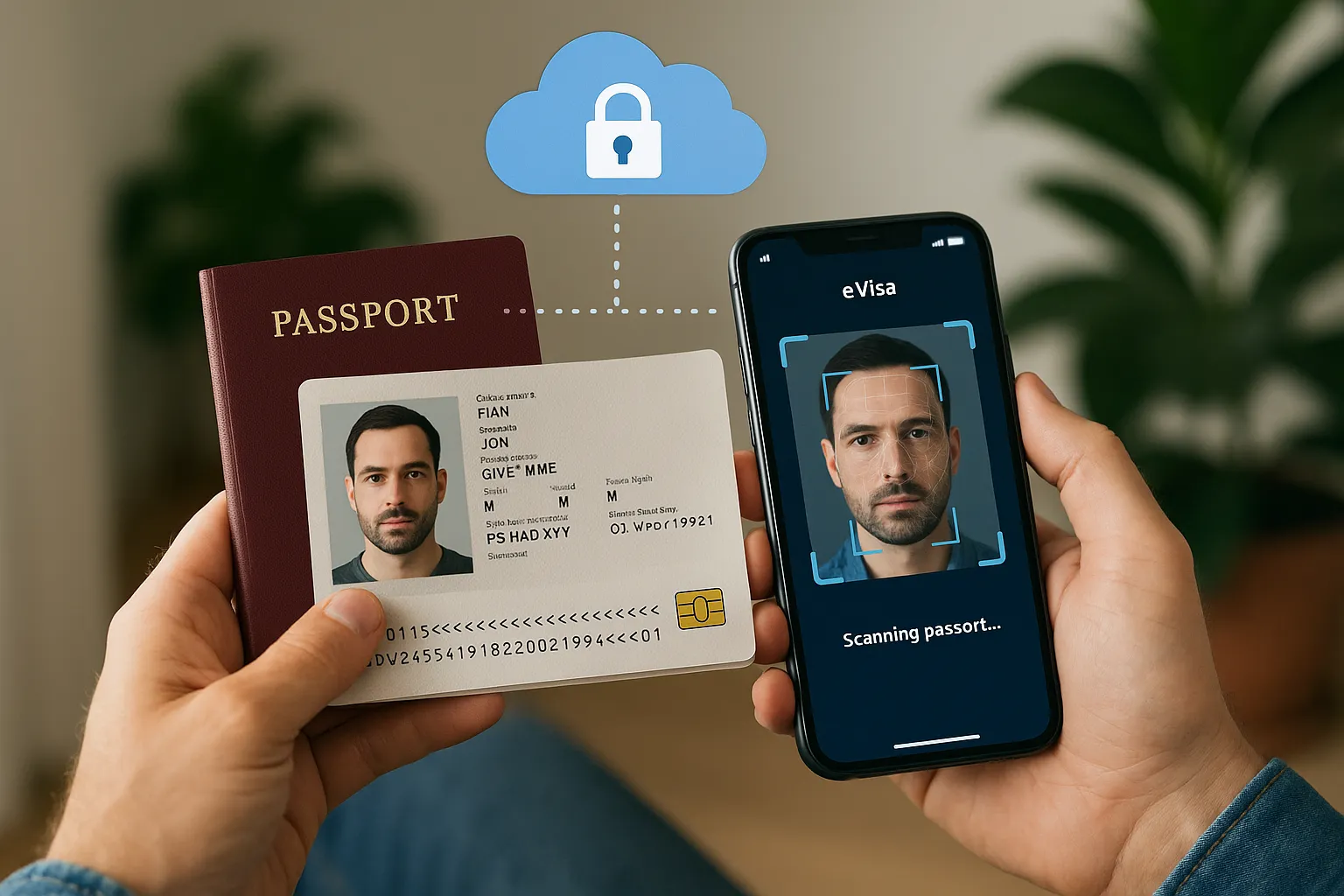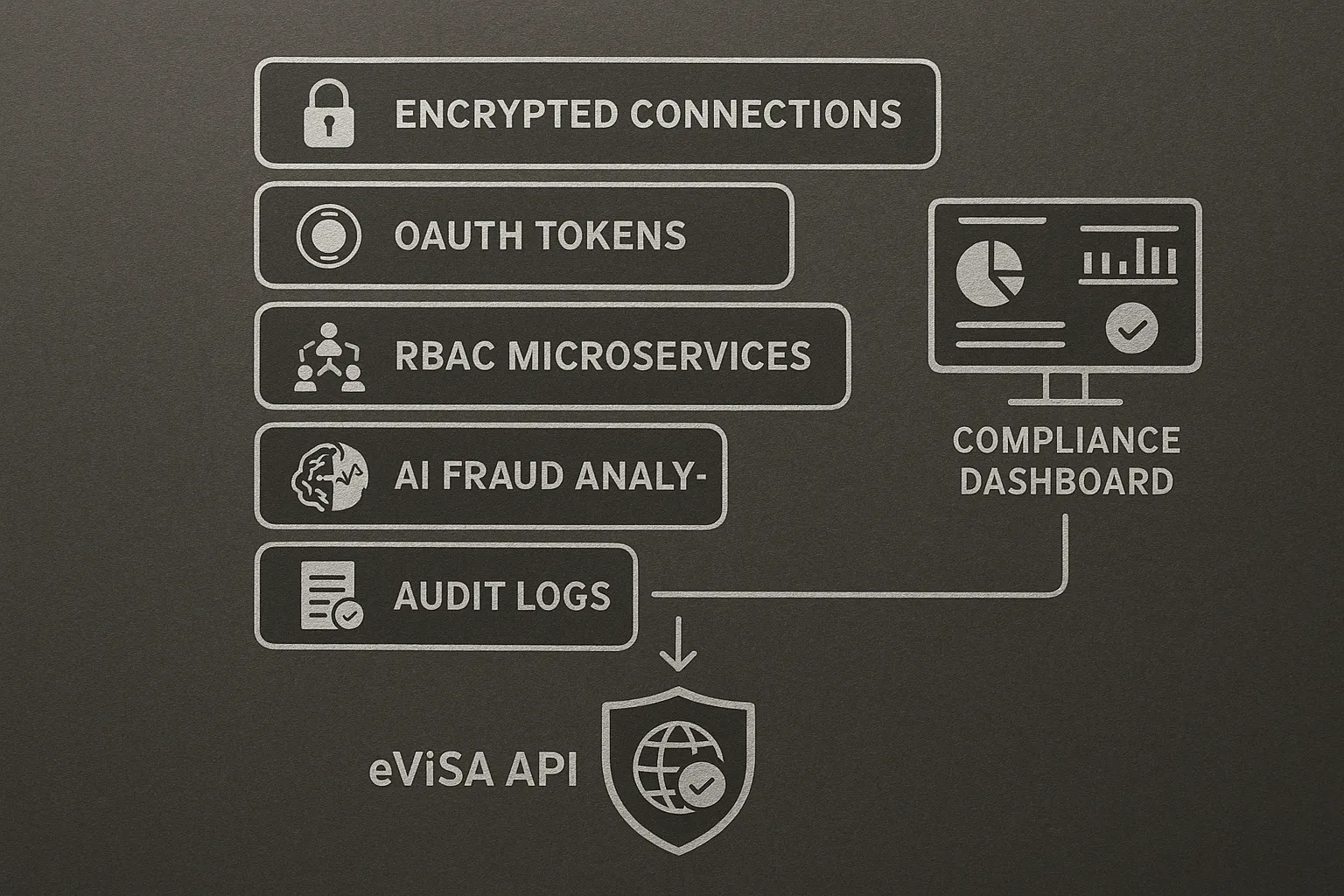Top 8 Security Features to Demand in Any Electronic Visa Solution

Why Security Has Become the Deal-Breaker for eVisa Platforms
An electronic visa platform handles the most sensitive data you can imagine: passport scans, travel itineraries, payment details, even biometric identifiers. A single breach can ground flights, trigger regulatory fines, and torch customer trust overnight.
For travel businesses that rely on a smooth, secure visa flow to keep bookings moving, security can no longer be an after-thought or a line item buried in the RFP. Below are the eight security features that should be non-negotiable when you evaluate any electronic visa solution—whether you plan to integrate via API, embed a white-label widget, or direct travelers to a standalone web app.
1. End-to-End Encryption—In Transit and at Rest
- Transport-layer security (TLS 1.3 by default) guards data as it travels between a traveler’s browser, your servers and the visa provider.
- Field-level encryption at rest ensures that even if someone gains access to the database, the passport number or biometric hash remains unreadable.
- Look for Bring-Your-Own-Key (BYOK) or Hardware Security Module (HSM) support if you operate in regions with strict data-sovereignty rules.
Quick test: Run a Qualys SSL Labs scan against the vendor’s public endpoints. A grade below “A” is a red flag.
2. Multi-Factor Authentication (MFA) for Every Role
An eVisa flow involves more actors than you might think—traveler, tour operator, call-center agent, and occasionally embassy staff. Strong MFA should apply to them all.
- Time-based one-time passwords (TOTP) or FIDO2 keys for back-office users.
- Email + SMS fallback for travelers who may not have roaming data.
- Step-up authentication when a user requests high-risk actions such as changing a passport number.
Without universal MFA, a single phished password can unlock the entire workflow.
3. Biometric Verification with Certified Liveness Checks
Uploading a passport photo is easy; proving that the applicant is alive and the rightful owner is harder.
- Passive liveness detection catches deepfakes without forcing the user to blink or turn their head.
- NFC chip reading on ePassports adds a cryptographic layer of assurance.
- Compliance with the ISO/IEC 30107-3 Presentation Attack Detection standard is becoming the global benchmark.

4. Continuous Watch-List Screening and Government Database Hooks
A security check at the moment of application isn’t enough. Travelers may be added to sanctions or no-fly lists between approval and boarding.
- Real-time API hooks into Interpol SLTD, OFAC, EU-L, and other national watch lists.
- Delta screening that re-checks stored applications on a configurable schedule (e.g., every six hours) until departure.
- Explainable match scoring so your risk team can quickly clear false positives.
Failing to re-screen is a compliance liability—and a potential PR nightmare—waiting to happen.
5. Data Minimisation, Tokenisation and Right-to-Be-Forgotten Workflows
Global privacy regimes (GDPR, CCPA, LGPD) now demand that companies collect only what they need—and erase it when it’s no longer justified.
- Field-level tokenisation converts card numbers and passport IDs into randomly generated tokens that are useless if leaked.
- Automated purge schedules wipe PII after a legally defined retention window (often 30–90 days after trip completion).
- Self-service data-deletion portals let travelers exercise their privacy rights without a support ticket.
If a provider can’t articulate how (and when) they delete data, walk away.
6. Immutable Audit Logging and Third-Party Certifications
Security claims are cheap; third-party audits aren’t.
- Immutable, append-only logs secured with technologies like AWS CloudTrail + AWS Lake Formation or blockchain-based hashing.
- Annual SOC 2 (Type II) or ISO 27001 attestations that you can actually review.
- Pen-test summaries from reputable firms (e.g., NCC Group, Synack) shared under NDA.
Need a deeper dive? Our article “How Secure Is the E-Visa System?” walks through the audit trail in detail. (Internal link → https://simplevisa.com/how-secure-is-the-e-visa-system/)
7. AI-Powered Fraud Detection & Behavioral Analytics
Cybercrime syndicates test stolen passport numbers against visa portals 24/7. Static rules alone can’t keep up.
- Behavioral anomaly detection flags applications submitted from TOR nodes, emulators, or copy-paste macros.
- Device fingerprinting correlates mouse movements, keystrokes, and gyroscope data to catch bots.
- Adaptive risk scoring triggers additional verification steps only when risk is high, preserving conversion rates for legitimate travelers.
A good vendor will publish false-positive and false-negative rates from their production environment—ask for them.
8. Secure API Design & Role-Based Access Control (RBAC)
If you plan to embed visa issuance directly in your booking flow via API, the integration layer becomes the attack surface.
- OAuth 2.0 / OpenID Connect for secure, scoped tokens.
- Fine-grained RBAC so that, say, a payment microservice can charge a card but never read a passport image.
- Rate limiting & signed webhooks to prevent denial-of-service attacks and replay exploits.
For a technical walk-through of what a hardened eVisa API looks like, see “How eVisa APIs Work: Step by Step.” (Internal link → https://simplevisa.com/how-do-evisa-api-work/)

Checklist: Questions to Put in Every RFP
- Encryption: What algorithms protect data in transit and at rest? Can we manage our own keys?
- Compliance: Do you hold valid SOC 2 (Type II) or ISO 27001 certificates? Share the latest report.
- MFA Coverage: Which user personas don’t require MFA—and why?
- Biometrics: Is your liveness detection certified under ISO/IEC 30107-3?
- Screening Cadence: How frequently are applications re-checked against updated watch lists?
- Data Purge: What is your default retention period, and can it be adjusted per tenant?
- Audit Access: How can our security team query immutable logs in real time?
- Incident Response: Outline your 24/7 escalation path and SLA for security events.
Any vendor that hesitates on these points probably has gaps you can’t afford.
Final Boarding Call
The eVisa boom is reshaping border management—but only the platforms that bake security into every layer will survive the next wave of regulations and threat actors. Demand the eight features above, verify them with independent evidence, and you’ll not only protect traveler data but also safeguard the continuity (and reputation) of your own travel brand.
Ready to see a security-first visa flow in action? Request a SimpleVisa demo and stress-test our platform against your toughest compliance checklist.